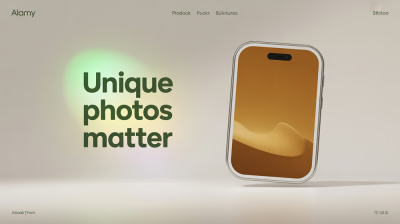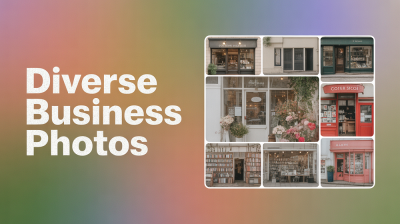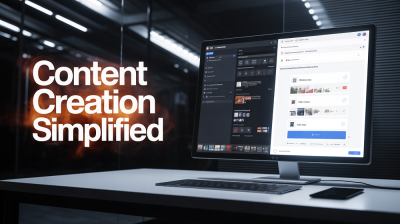Displaying images side by side can enhance the visual appeal of your web content, making it more engaging and informative for your audience. Whether you’re showcasing a product, creating a portfolio, or just sharing personal photos, aligning images horizontally is a fantastic way to draw attention and create a polished look. In this post, we’ll explore some effortless methods for arranging images side by side, focusing particularly on using HTML and CSS—a fundamental skill set for anyone working in web design.
Using HTML and CSS for Side by Side Images

One of the most effective ways to display images side by side is by utilizing HTML and CSS. These technologies provide you with ample flexibility and control over how your images appear on the page. Let’s dive into how you can do this seamlessly.
To get started, you’ll first need to set up your HTML structure. Here’s a simple layout:
<div class="image-container"> <img src="image1.jpg" alt="Image 1" class="side-image"> <img src="image2.jpg" alt="Image 2" class="side-image"></div>In this code snippet, we create a div container that holds two images. The class side-image can be used for both images to apply consistent styling.
Now, let’s move on to the CSS part. You can add the following styles to make your images display side by side:
.image-container { display: flex; / This creates a flexible layout / justify-content: space-around; / Centers the images and distributes space /}.side-image { max-width: 45%; / Ensure images don't exceed container's width / height: auto; / Keeps images proportional / margin: 10px; / Adds some spacing around the images /}And voilà! When you implement the above code into your webpage, your images will sit side by side in a visually appealing manner. You can tweak the CSS properties as needed, such as changing the spacing or adjusting the widths. Remember, using flexbox in CSS is not only easy but also makes your layout responsive, ensuring it looks good on all devices—from desktops to smartphones. Give it a try, and explore the endless possibilities of image displays using HTML and CSS!
3. Utilizing CSS Flexbox

If you're looking for a simple yet powerful way to display images side by side, CSS Flexbox is your best friend! Flexbox allows you to create responsive layouts with minimal effort, making it a popular choice for web designers and developers alike.
To get started with Flexbox, you’ll first need a container element. Here’s a quick rundown of the steps you can take to achieve a side-by-side image layout:
- Create a Container: Begin with a
<div>that will act as your flex container. - Set Display to Flex: Use CSS to set the
displayproperty toflex. This will allow the child elements (your images) to be aligned in a row. - Style the Images: You can control how your images behave inside the flex container with properties like
flex-grow,flex-shrink, andflex-basis.
Here’s a quick code snippet to illustrate:


And there you have it! With just a few lines of CSS, you can display your images side by side in a sleek and responsive manner.
4. Grid Layout for Image Display

Another fantastic technique for displaying images side by side is using CSS Grid Layout. This powerful layout system allows for more complex designs and offers more control over the placement of images compared to Flexbox.
With Grid, you can define rows and columns, making it ideal if you want to create a structured layout. Here's how you can set it up:
- Define the Grid Container: Start by wrapping your images in a container div that you will designate as the grid.
- Set Display to Grid: Style this container with
display: grid. You can then define how many columns you want with thegrid-template-columnsproperty. - Control Image Sizing: Each image can be assigned a specific area or allowed to fill the grid space automatically.
Here’s an example of what your code might look like:




Using Grid truly gives you the flexibility to create visually appealing layouts with ease. Whether you need a simple two-column display or a more complex arrangement, Grid Layout has got you covered!
5. Responsive Techniques for Side by Side Images
When it comes to displaying images side by side, responsiveness is key! You want your images to look great on any device, whether it's a desktop, tablet, or smartphone. Luckily, there are a few effortless techniques to ensure that your side-by-side images adapt beautifully across different screen sizes.
- Flexbox Layout: Flexbox is a powerful CSS tool that allows for flexible layouts. By using it, you can easily align your images next to each other. Just apply the display: flex property to the container, and your images will naturally sit side by side.
- CSS Grid: If you’re looking for something more robust, CSS Grid is a fantastic choice. You can create rows and columns, making it super easy to manage your layout. Define grid columns for your images, and they’ll adjust fluidly.
- Media Queries: Implementing media queries is a crucial step for responsiveness. You can write custom CSS rules that change the layout based on the screen size. For instance, switch from side by side to a stacked layout on smaller devices.
Here’s a simple example of how you can use Flexbox:
.container { display: flex; justify-content: space-between;}.image { width: 48%; / Adjust width accordingly /}With these techniques, your side-by-side images will remain visually appealing and functional, regardless of the device your audience is using.
6. Considerations and Tips
Before diving into your image layout, there are a few important considerations and tips that can enhance the overall look and functionality of your side-by-side images. Here’s what you should keep in mind:
- Image Size: Ensure your images are optimized for the web. Large images can slow down your page load time, which can frustrate visitors. Use tools like TinyPNG or ImageOptim to compress your images without losing quality.
- Aspect Ratio: Maintaining a consistent aspect ratio will help your images look harmonious on the page. Whether you choose landscape, portrait, or square images, stick to one style for consistency.
- Aesthetic Alignment: Consider the overall aesthetic of your webpage. Use borders or shadows for visuals that stand out, but don’t overdo it! Keep it simple to give a crisp look.
Additionally, testing your layout on different devices is crucial. Tools such as Chrome Developer Tools can simulate various screen sizes so you can see how your images will appear on different devices.
Lastly, don’t forget to include alt tags for each image for accessibility and SEO purposes. This also helps your audience understand your visuals better, which is always a plus!
Effortless Ways to Display Images Side by Side
Displaying images side by side can enhance your blog's visual appeal and provide a better user experience. Fortunately, there are several effortless ways to accomplish this task, whether you're coding from scratch or using website builder tools. Here are some of the most effective methods:
1. HTML & CSS Method
One of the simplest ways to display images side by side is using basic HTML and CSS. Here’s a straightforward example:
<div class="image-container"> <img src="image1.jpg" alt="Image 1" class="image"> <img src="image2.jpg" alt="Image 2" class="image"></div><style>.image-container { display: flex;}.image { margin: 10px; width: 45%; / Adjust as needed /}</style>This code snippet creates a flexible layout where images adapt to screen size.
2. Using CSS Grid
CSS Grid is a powerful layout system that simplifies the arrangement of images. Here’s how to use it:
<div class="grid-container"> <img src="image1.jpg" alt="Image 1" class="grid-item"> <img src="image2.jpg" alt="Image 2" class="grid-item"></div><style>.grid-container { display: grid; grid-template-columns: repeat(2, 1fr);}.grid-item { margin: 10px;}</style>3. Using WordPress Plugins
If you're using WordPress, various plugins can help you achieve side-by-side images effortlessly. Some popular options include:
- Envira Gallery: A user-friendly gallery plugin.
- FooGallery: Offers a range of customizable options.
- WP Responsive Recent Post Slider: Great for displaying recent images together.
4. Table Method
For a more traditional approach, you can also use HTML tables:
<table> <tr> <td><img src="image1.jpg" alt="Image 1"></td> <td><img src="image2.jpg" alt="Image 2"></td> </tr></table>This is a straightforward method, but it's less responsive than flex or grid layouts.
In conclusion, displaying images side by side can be made effortless through various methods such as using HTML and CSS, CSS Grid, WordPress plugins, or even tables. Choose the approach that best fits your needs and enhances your content's visual storytelling.










